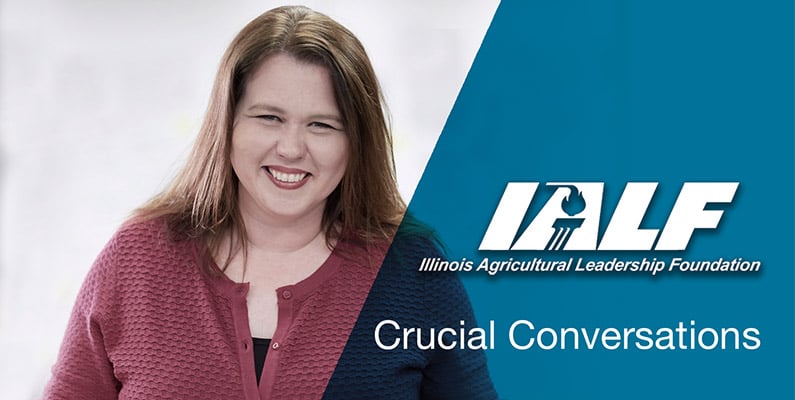How to Facilitate Crucial Conversations in Agriculture
Key principles for successful communication about polarizing topics

A few months ago, we shared that I was selected for the Illinois Agricultural Leadership Foundation Class of 2022. We were scheduled to kick off the series of 15 seminars in August, but what has gone according to plan in over the past year? This program is no different.
Due to COVID restrictions and an inability to meet in person, we’re now the class of 2023, with an in-person kickoff scheduled for August 2021. In the meantime, we will have a few educational seminars via Zoom.
Our first virtual meeting was a discussion of the book Crucial Conversations: Tools for Talking when Stakes are High. I’m not big on re-reading books, but this is one I’ll likely revisit every year or two.
The subject matter isn’t specific to agriculture, but as I read it quickly became evident that it can be a helpful tool for those of us who work in the industry. Every day we interact with audiences who have deeply-held emotional beliefs. From farmers who are proud of their heritage to consumers who have never been on a farm and read opinions online. The book explains that our instinctive reactions to a topic might not be the best way to engage in crucial conversations.
Tools for Talking When the Stakes are High
When we are passionate about a topic, like I am about agriculture, we can be quick to defend our viewpoint, which often puts the other party on the defensive. When emotions escalate, no one listens. This shuts down substantive conversation and stalemates progress.
Any conversation can be a crucial conversation – they don’t need to be focused on heavy topics like GMOs or human-caused climate change. A crucial conversation is any conversation that affects your life. These topics can be heavy, like the aforementioned, or they can be seemingly mundane, like which replacement washer to buy, where to go on a weekend vacation or who to visit during holidays.
So just how do we defuse defensiveness on either side of a discussion and make crucial conversations productive?
Creating Free Flow of Meaning in Dialogue
One of the key tenets of the book is how to engage in dialogue. Contrary to our first assumption, dialogue is not just conversation. More specifically, dialogue is the free flow of meaning between two or more parties.
Wait, what? What does “free flow of meaning” even mean?
Perhaps it’s best explained by the book directly. Paraphrasing doesn’t do the explanation justice:
“Each of us enters conversations with our own opinions, feelings, theories and experiences about the topic at hand. This unique combination of thoughts and feelings make up our pool of meaning…
When two or more of us enter crucial conversations, by definition we don’t share the same pool. Our opinions differ. I believe one thing; you another. I have one history; you another.
People who are skilled at dialogue do their best to make it safe for everyone to add their meaning to the shared pool – even ideas that at first glance appear controversial, wrong or at odds with their own beliefs. Now, obviously, they don’t agree with every idea; they simply do their best to ensure that all ideas find their way into the open.”
As that shared pool of meaning grows, we all develop a better understanding of other viewpoints, which helps us have more productive and less abrasive crucial conversations.
Crucial Conversations Advance Agriculture
It comes as no surprise to, well, anyone, that I’m passionate about agriculture. After all, I was part of the fifth generation to grow up on our family farm, I’ve been in ag communications for almost 25 years, and several family members still farm. Admittedly, it can be challenging to maintain my composure when faced with differing viewpoints from new colleagues who haven’t worked in ag, friends who have never actually been on a farm and even some clients. But composure is exactly what’s necessary if you want anyone to respectfully engage when discussing opposing viewpoints.
Crucial conversations are vital to the future of agriculture. They help consumers better understand who gets food to their tables. Crucial conversations help farmers understand why consumers believe what they do – especially if it includes misinformation – and how to correct misinformation among consumers.
One blog post can’t quite do justice for this book, but I’m looking forward to putting its principles into consistent play in my own crucial conversations, and helping clients and colleagues be successful in theirs.

